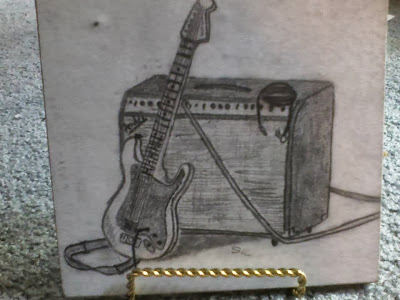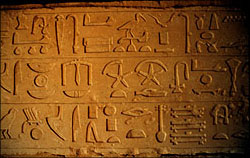Lesson 10 Essay
When
Phil, Abbey, Andy, and Tom Baker hear that their cousin Millie will
visit their farm for the summer, little do they imagine what a dreary
time they will have with the snobbish girl. But when Millie
disappears, life quickly becomes anything but dreary.
A
Summer of Suspense,
by C.R. Hedgcock, is
just one of the many books in the Baker
Family Adventures.
This is a very good book about family and friendship.
The
exposition,
or introduction to this book happens in the first chapter. This
chapter introduces you to the Baker family and their customs. You
learn that the family loves horseback riding and often competes in
county fairs.
The
rising
action begins
in the second chapter and continues to build tension until the climax
in chapter nineteen. Here's a quick recap of what happened in those
chapters.
Millie
Drake, the Baker's cousin, arrives and is immediately wanting to go
home. Then the horses start getting out and the Baker kids accuse
Millie of letting them out. Calvin, Millie's horse disappears and
Millie leaves to go find him. She doesn't come back and the kids get
worried. They go to the fairgrounds thinking Millie has gone there.
Instead, Abbey Baker is kidnapped. Millie's dad, Uncle Clive, hires a
detective to find her. Abbey is brought to a house where she is
locked in a dark room. She discovers that Millie has been kidnapped
and is in the same room with her. By now the detective has realized
that the kidnapper is Miss Trina Verton, a famous jewel thief. Abbey
and Millie unlock the door by using Abbey's braces and escape by
riding the kidnapper's horses. Phil Baker and Detective Jones find
Miss Verton's lair and make a plan to capture her but end up being
discovered by Verton's bodyguards. Meanwhile, Abbey and Millie
somehow end up at the lair. They are found out by an employee named
Jigson who helps them find Phil and Detective Jones. Jigson gets a
plan together to rescue Phil and Detective Jones by knocking out Miss
Verton and calling the police. All they have to do now is get out
without being caught.
As
I said before, the climax
happens
very quickly in the nineteenth chapter. Here, Abbey, Millie, Phil,
Jigson, and Detective Jones all work together to get out safely and
unnoticed. While the girls hide in the kidnapper's car trunk,
Detective Jones and Phil tackle the guards stationed at the door.
Jigson opens up the door of the lair to let in the police cars. The
police quickly handcuff the guards. That pretty much wraps up the
climax, so now we'll move onto the resolution.
The
resolution
finishes
up this book from the twentieth chapter to the last chapter. The
Baker kids and Millie Drake arrive back safely at the farm. Jigson
and Jones explain what happened and how they captured the jewel
thieves. And then, two days later, the Baker family competes in the
county fair.
I
think this was an excellent book. During Abbey's and Millie's time
imprisoned together, they became fast friends. All throughout this
book, everyone always found time to pray to God.















